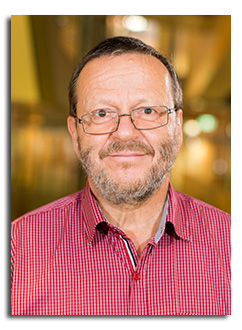
Abstract
In this talk our contributions in the last 5 years to further developing quantitative luminescence imaging methods for solar cells are reviewed. First it is explained by 2D device simulations and a simple model why previous methods for J01 imaging by PL have led to erroneous results. This is due to the model of independent diodes applied in these methods, which does not consider horizontal balancing currents and leads to erroneous local current distributions. On the other hand, DLIT-based 'Local I-V' investigations, which also rely on the model of independent diodes, lead to a correct but blurred J01 distribution, since here the current is measured more directly. Two alternative PL based J01 imaging methods will be introduced, which are the Laplacian evaluation and the nonlinear Fuyuki evaluation. These methods lead to high-resolution J01 images, which are quantitatively equivalent to DLIT-based J01 images. This, however, can only be realized if some more improvements for evaluating luminescence images are applied, which will also be introduced here. These are the correct imaging of the calibration constant and correctly regarding photon scattering in the detector, for which appropriate methods will be introduced. For nonlinear Fuyuki evaluation moreover band-pass light filtering and vignetting correction must be applied. A new method combining Laplacian and nonlinear Fuyuki evaluation will be proposed. Most recent investigations of illumination intensity-dependent recombination at certain grain boundaries will be introduced, which lead to an apparent ideality factor of the luminescence at these defects smaller than 1. Finally, it is described how a Griddler model of an inhomogeneous solar cell can be constructed, including an inhomogeneous distribution of J01, Rgrid, and Rcontact, solely based on luminescence imaging results.
Click here to see all available video seminars.
Click here to go to the SPREE HOMEPAGE.
Brief Bio
- Ph.D. in Physics at Leipzig University in 1980 on Deep Level Transient Spectroscopy (DLTS).
- Working until 1992 at Academy Institute oft Solid State Physics and Electron Microscopy in Halle on Scanning DLTS.
- Since 1992 working at Max Planck Institute of Microstructure Physics in Halle.
- Main topic: Local characterization of solar cells by imaging methods like lock-in thermography, luminescence imaging, SEM-EBIC, and (S)TEM.
- Several hundred publications in journals and at conferences.
- Author of a book on lock-in thermography.
